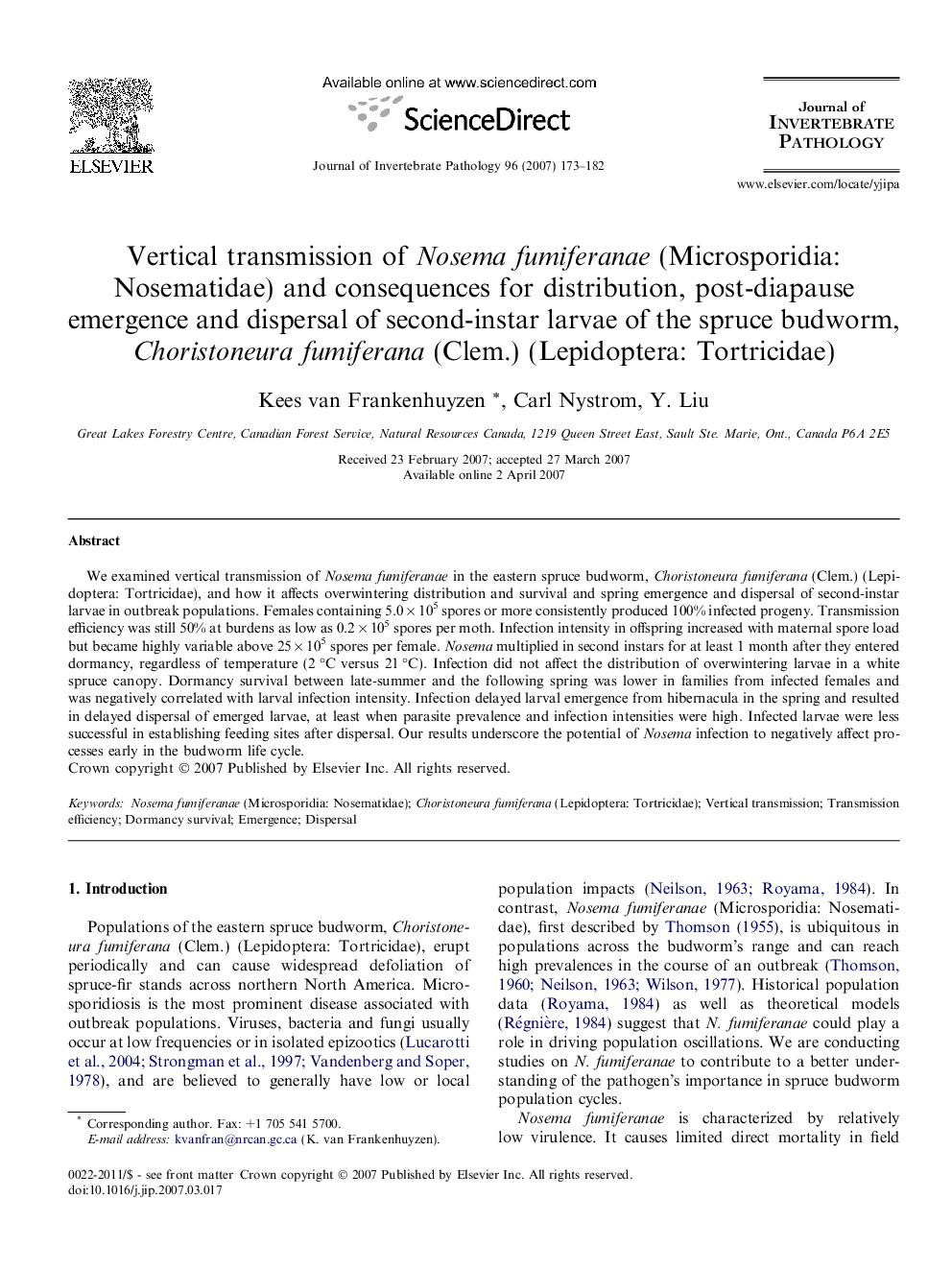| Article ID | Journal | Published Year | Pages | File Type |
|---|---|---|---|---|
| 4558642 | Journal of Invertebrate Pathology | 2007 | 10 Pages |
We examined vertical transmission of Nosema fumiferanae in the eastern spruce budworm, Choristoneura fumiferana (Clem.) (Lepidoptera: Tortricidae), and how it affects overwintering distribution and survival and spring emergence and dispersal of second-instar larvae in outbreak populations. Females containing 5.0 × 105 spores or more consistently produced 100% infected progeny. Transmission efficiency was still 50% at burdens as low as 0.2 × 105 spores per moth. Infection intensity in offspring increased with maternal spore load but became highly variable above 25 × 105 spores per female. Nosema multiplied in second instars for at least 1 month after they entered dormancy, regardless of temperature (2 °C versus 21 °C). Infection did not affect the distribution of overwintering larvae in a white spruce canopy. Dormancy survival between late-summer and the following spring was lower in families from infected females and was negatively correlated with larval infection intensity. Infection delayed larval emergence from hibernacula in the spring and resulted in delayed dispersal of emerged larvae, at least when parasite prevalence and infection intensities were high. Infected larvae were less successful in establishing feeding sites after dispersal. Our results underscore the potential of Nosema infection to negatively affect processes early in the budworm life cycle.
